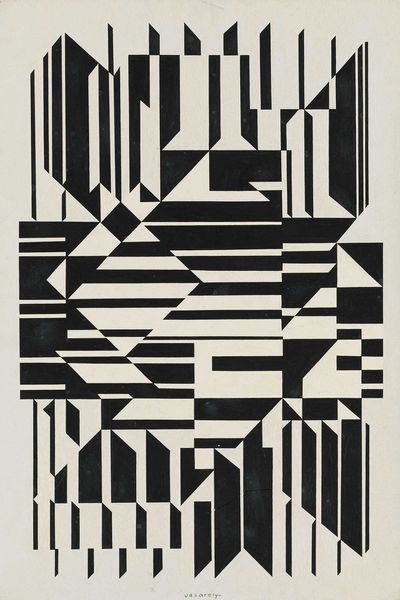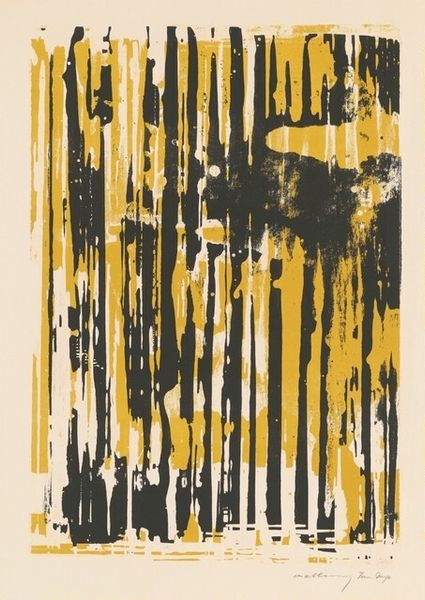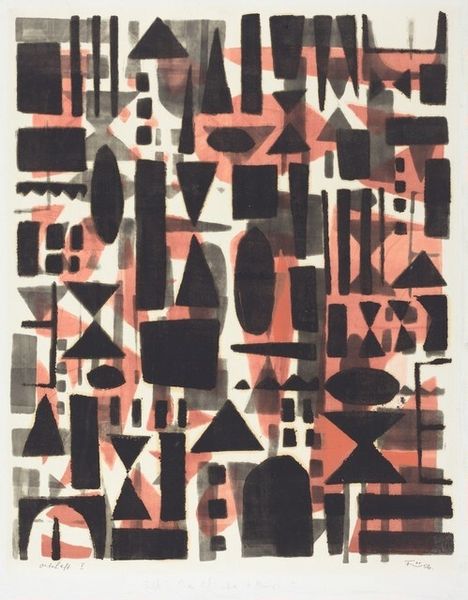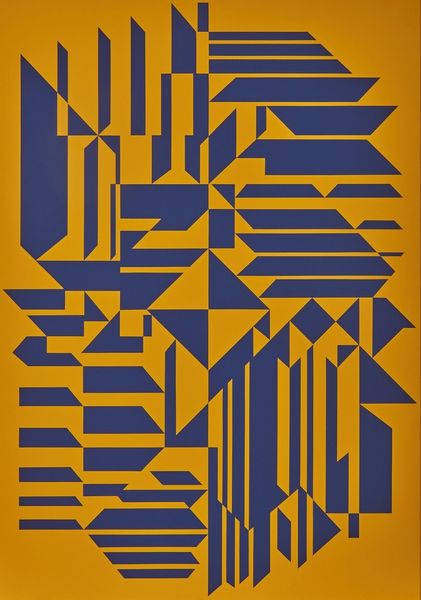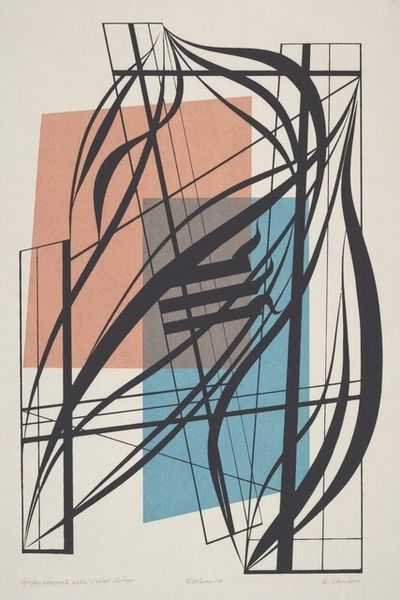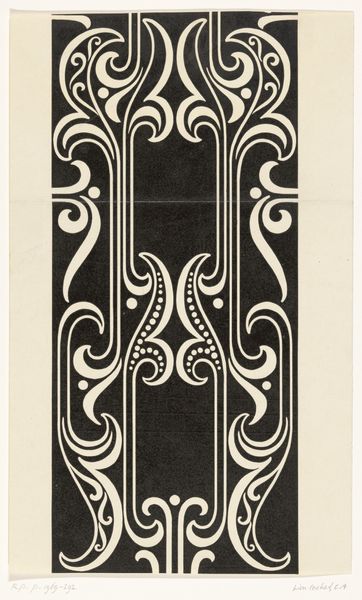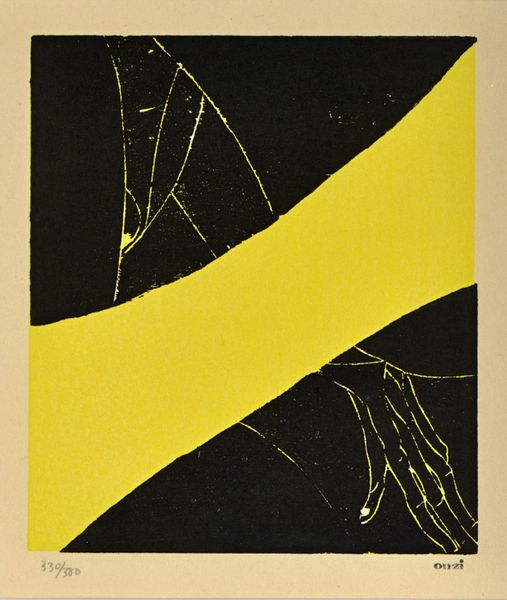
drawing, print, paper, typography
#
drawing
#
type repetition
#
minimalism
# print
#
op art
#
pop art
#
paper
#
text
#
typography
#
geometric
#
geometric-abstraction
#
abstraction
#
bauhaus
#
monochrome
Copyright: Josef Albers,Fair Use
Editor: So, we're looking at Josef Albers' "6 and 3" from 1931, a print on paper. It’s mostly blacks and grays and at first glance, it reminds me of some kind of Op Art experiment. How do you interpret this work? Curator: Well, it’s impossible to look at Albers without considering the Bauhaus. Here, we see the intersection of art, craft, and technology which the Bauhaus championed. But, critically, how does the context of interwar Germany—marked by industrial growth, social upheaval, and the rise of mass media—shape our understanding of this piece? Is Albers merely exploring form, or is there a commentary on the increasing standardization of life? Editor: That’s fascinating. The idea of standardization…I hadn't considered that. Curator: Exactly! Look at the repetition of the numbers, the geometric shapes. The visual language evokes efficiency and precision which are reflected in industrial design. Albers uses these motifs and turns typography into art, reflecting the Bauhaus mission to dissolve the hierarchy between fine and applied arts. It also emphasizes functionality. But the abstraction also resists any simple reading; is it celebrating or critiquing this new world? What do you think? Editor: It's interesting how you point out the visual language evokes efficiency. The Bauhaus movement, originating in Germany, also got shut down by the Nazi regime. Curator: Yes! Consider the socio-political undertones of Albers' work as he made the transition to the United States. How do his artistic ideas intersect with these broader political and cultural shifts? Editor: So much more than just numbers on a page! Curator: Precisely. It’s a visual document embedded within specific historical circumstances, open to diverse readings about the nature of progress, standardization, and the role of the artist within society. Editor: I never would have connected typography to historical commentary without your insights. Thank you!
Comments
No comments
Be the first to comment and join the conversation on the ultimate creative platform.

